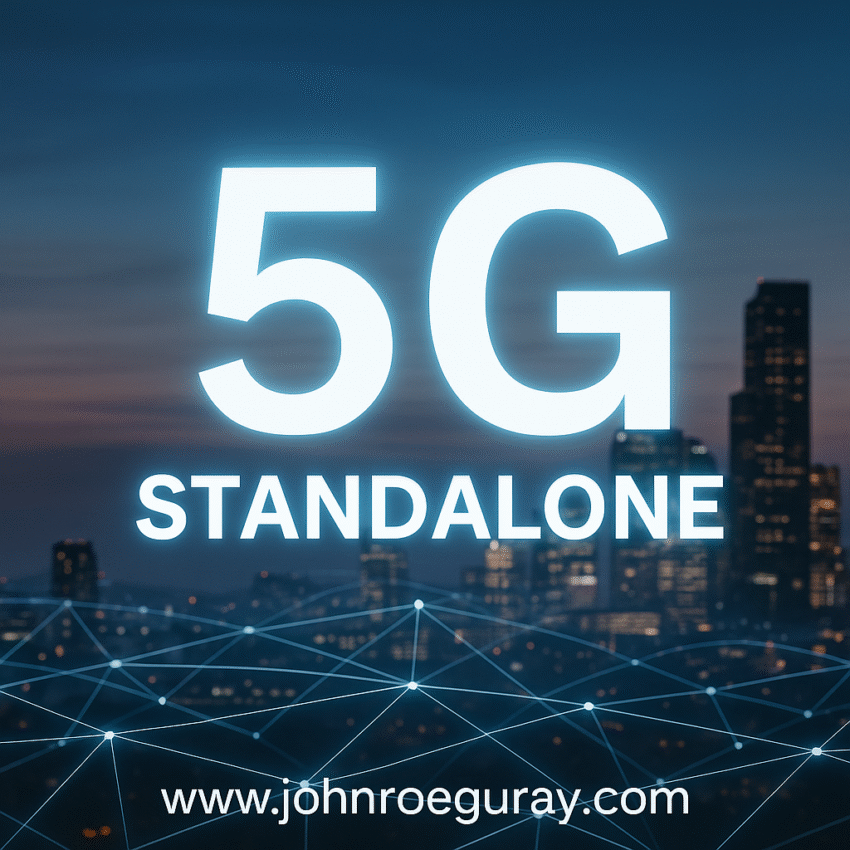Standalone 5G (5G SA) is no longer a distant promise —i t’s live, driving innovation and carving new business opportunities. Here’s how the Big Three operators in the U.S. are stacking up:
AT&T: 5G SA Primed for Business
- AT&T has built out a standalone 5G core that unlocks key capabilities like ultra‑low latency, ultra‑high reliability, and edge integration—crucial for enterprise use cases such as connected cars, remote operations, and IoT deployments (about.att.com).
- The carrier is expanding its edge zones—currently in double digits across the U.S.—which gives businesses fast, localized connectivity with hyperscalers such as AWS, Microsoft Azure, and Google Cloud (SDxCentral).
- It has also reached full nationwide coverage with 5G RedCap, servicing over 200 million POPs with high-performance, cost‑efficient device support (about.att.com).
- AT&T’s roadmap suggests a steady rollout through 2027 to modernize and monetize its SA ecosystem for enterprises and GenAI‑driven innovation (AP News).
Bottom line: AT&T now offers a mature 5G SA infrastructure tailored to business needs, quietly advancing its stack through strategic investments and partnerships.
Verizon: Building Out 5G SA for Business Verticals
- Verizon has launched commercial private 5G offerings—such as “On Site 5G”—and is rolling out its Frontline network slicing for public safety and enterprise users in nearly 30 markets (Verizon).
- The carrier is steadily migrating commercial traffic to its cloud-native 5G core, unlocking network slicing, RedCap, and other SA-based services in 2024 and beyond (RCR Wireless News).
- CEO commentary underscores confidence in future slicing deployments tied to its 5G SA capabilities (SDxCentral).
Bottom line: Verizon has 5G SA infrastructure poised for enterprise and public sector deployment, albeit not yet nationwide, focusing on key verticals and private network contracts.
T‑Mobile: Slicing Its Way Ahead with 5G SA
- After launching a true nationwide SA network back in August 2020 (and extending to mid‑band spectrum by late 2022), T‑Mobile is widely recognized as the U.S. leader in real-world network slicing (Fierce Telecom).
- Its slicing strategy includes the T‑Priority program—commercially available to first responders—which ensures guaranteed capacity, low latency, and priority service on its SA network (T-Mobile).
- T‑Mobile has also delivered dedicated slices for major enterprises and high‑profile events—most notably Disney StudioLAB, Formula One, SailGP, New York City agencies, and large live events requiring isolated high-bandwidth services (Fierce Network).
- Today it supports developers via slicing APIs (Quality-on-Demand), and it has operationalized L4S (Low Latency, Low Loss, Scalable throughput) across its 5G Advanced network—foundation tech for high-fidelity enterprise applications like XR, remote operations, and cloud gaming (T-Mobile).
Bottom line: T‑Mobile isn’t just ready with SA—it’s actively monetizing slicing capabilities at scale with multiple enterprise and public‑sector wins.
Strategic Comparison
| Operator | 5G SA Status | Business Focus | Noteworthy Strengths |
|---|---|---|---|
| AT&T | Broad deployment | Edge zones, RedCap, GenAI, IoT, automation | Scalable reliability & edge-ready core |
| Verizon | Selective rollout | Private networks, public safety slices | Private 5G and vertical solutions |
| T‑Mobile | Nationwide SA | Multi‑slice deals, developer APIs | Proven slicing leadership and user cases |
Final Thoughts
AT&T and Verizon have indeed elevated their standalone 5G capabilities to serve businesses with reliability, latency guarantees, and edge integration. AT&T leads with broader edge and RedCap adoption, while Verizon continues building toward enterprise-ready slicing markets.
But T‑Mobile remains the standout—not only having nationwide SA in place, but also commercializing network slicing at scale across diverse sectors. From first responders via T‑Priority to enterprise-grade API‐based slicing and major event deployments, T‑Mobile is delivering real-world slicing today.
T‑Mobile leads the charge in monetizing standalone 5G slicing, while AT&T and Verizon refine their infrastructures to serve enterprise needs. It’s a compelling time for businesses evaluating which operator can deliver tailored, high-performance 5G solutions.


